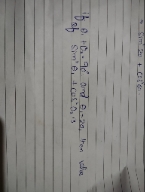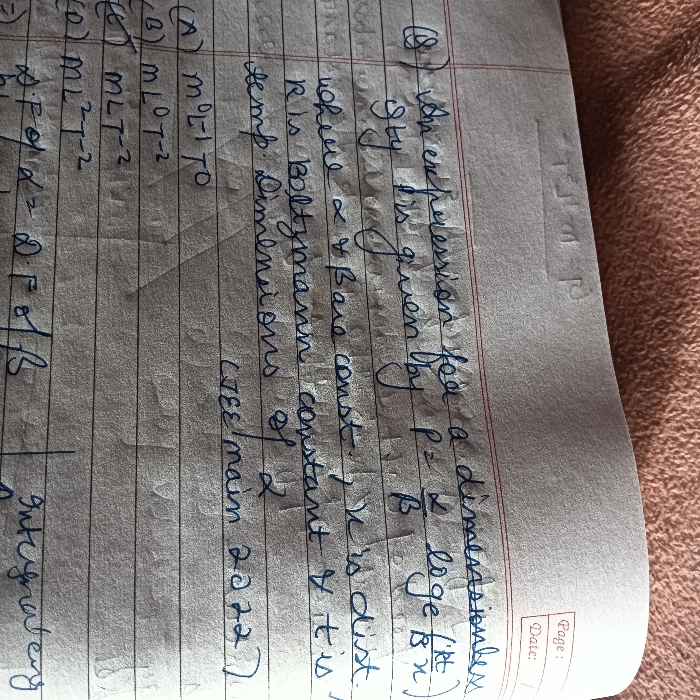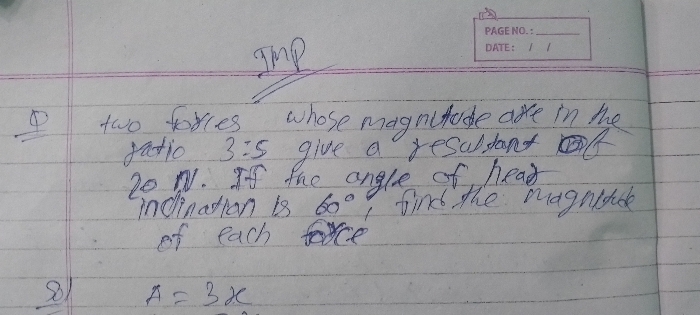CBSE Class 11-science Answered
A particle is projected vertically upwards from the ground with velocity U it reaches at maximum height in time T1 after that it returns back to the ground with velocity v in time T2 if a resistance is considered then find the correct relation between T1 and t2 and correct relation between U and v?
Asked by malaysaha.80 | 01 Sep, 2019, 10:23: AM
During upward motion, acceleration (dv/dt) is give by, (dv/dt) = -g - ( k v ) ...................(1)
where k is constant and v is instantaneous speed. Second term is due to air resistance and is proportional to velocity.
Eqn.(1) is written as, 

integrating both sides with proper limits, we get

During downward motion, acceleration (dv'/dt) is given by, (dv'/dt) = g - (k v' ) ..................................(3)
Eqn.(3) is written as, 

integrating both sides with proper limits, we get

From eqn.(3) and eqn.(4), we get,

from eqn.(2), we get , 

from eqn.(4) we get, 

Hence, 

Answered by Thiyagarajan K | 01 Sep, 2019, 03:46: PM
CBSE 11-science - Physics
Asked by sheikhsaadat24 | 17 Apr, 2024, 09:41: PM
CBSE 11-science - Physics
Asked by sy123946 | 07 Apr, 2024, 04:23: PM
CBSE 11-science - Physics
Asked by derhebha955 | 03 Apr, 2024, 09:03: AM
CBSE 11-science - Physics
Asked by sumedhasingh238 | 29 Mar, 2024, 05:15: PM
CBSE 11-science - Physics
Asked by sumedhasingh238 | 28 Mar, 2024, 11:10: PM
CBSE 11-science - Physics
Asked by roshnibudhrani88 | 23 Mar, 2024, 05:52: PM
CBSE 11-science - Physics
Asked by emad.amd | 21 Mar, 2024, 12:00: PM
CBSE 11-science - Physics
Asked by vinitdubey7735 | 14 Mar, 2024, 11:21: AM
CBSE 11-science - Physics
Asked by om636694 | 04 Mar, 2024, 09:10: PM
CBSE 11-science - Physics
Asked by rajuinwati12 | 04 Mar, 2024, 09:22: AM




